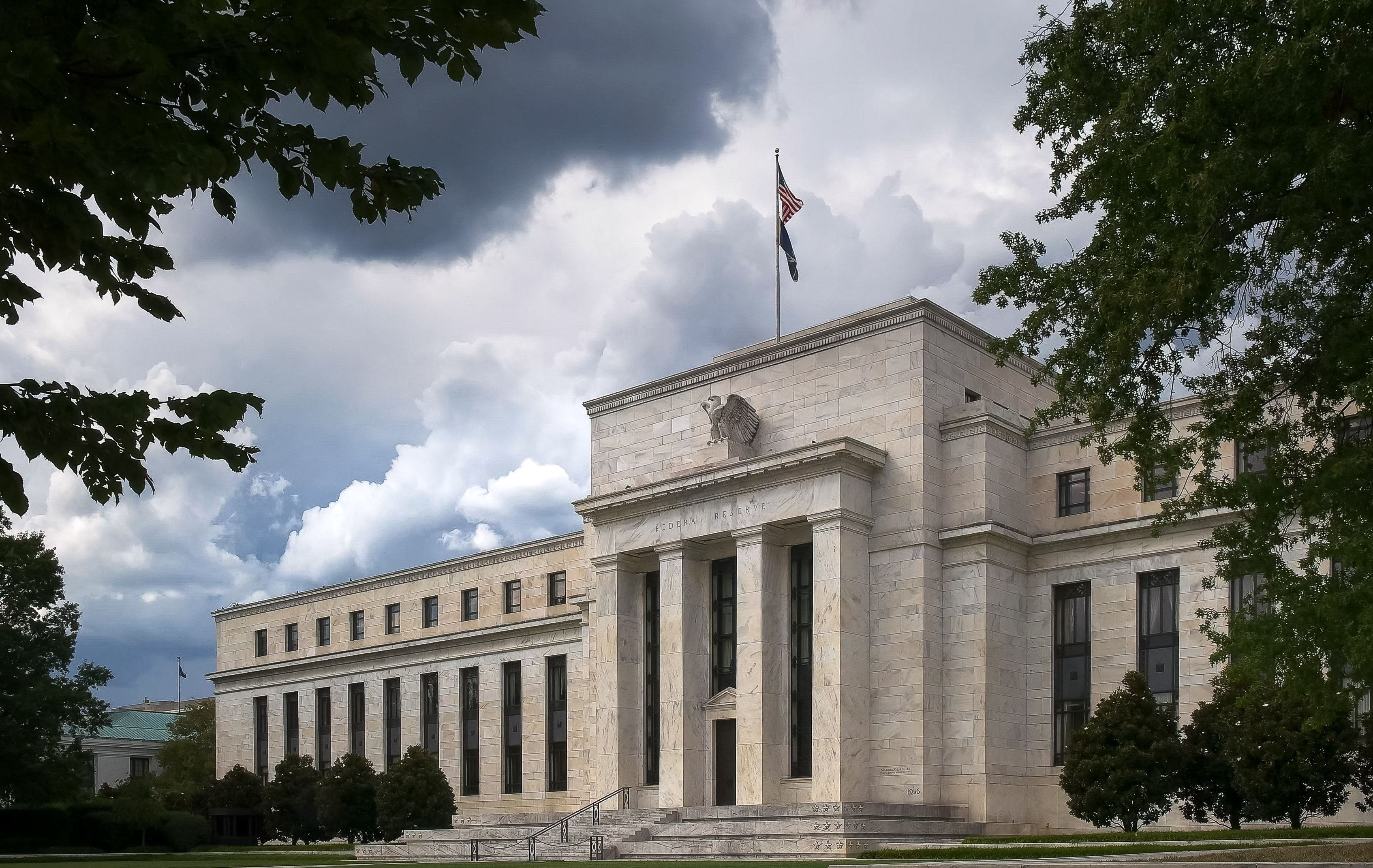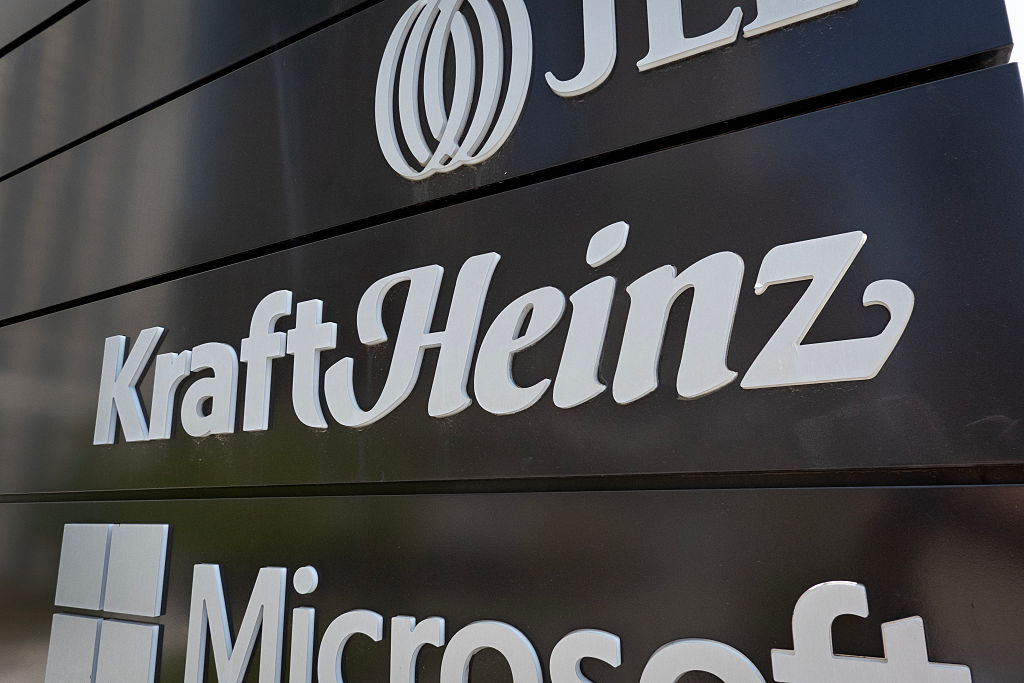The Worst Is Over
Yes, we're in a recession, but savvy investors are finding a lot of attractive stocks.
For years, American households and financial institutions have pushed the limits of debt. More and more they borrowed, enjoying a giddying ride up. But now they've hit the ceiling, and the credit boom has turned to bust. The ride down will not be pleasant.
But that doesn't mean the U.S. stock market is doomed to a prolonged downturn. The market, which tends to anticipate future economic activity, typically bottoms in an atmosphere of pervasive gloom and negativity. Although we're not predicting a rip-roaring bull market this year, stocks could still end the year in the black, just as we forecast in January.
| Row 0 - Cell 0 | The Best Ways to Invest in Bonds |
| Row 1 - Cell 0 | Spotting a Stock-Market Bottom |
| Row 2 - Cell 0 | How the Experts See It |
| Row 3 - Cell 0 | 5 Risks That Weigh on the Markets |
The economy almost certainly has lapsed into recession. Cuts in short-term interest rates engineered by the Federal Reserve Board, the enactment of a $150-billion economic-stimulus package and the robust health of non-financial businesses may soften the blow and make this recession a mild one.
From just $107.88 $24.99 for Kiplinger Personal Finance
Become a smarter, better informed investor. Subscribe from just $107.88 $24.99, plus get up to 4 Special Issues

Sign up for Kiplinger’s Free Newsletters
Profit and prosper with the best of expert advice on investing, taxes, retirement, personal finance and more - straight to your e-mail.
Profit and prosper with the best of expert advice - straight to your e-mail.
But recovery to the next business cycle will be slow and arduous, possibly taking two to three years, because of the severe damage inflicted on the balance sheets of banks and consumers. David Rosenberg, senior economist at Merrill Lynch, thinks the economy will struggle to grow 1% in both 2008 and 2009.
The distress began with the pricking of the bubble in residential housing prices, which were inflated by reckless lending and borrowing practices between 2004 and 2006. The National Association of Realtors says median home prices have fallen 15% from their peak in July 2006. But inventories of vacant and unsold houses are still bloated, and home prices are way out of whack compared with incomes and the cost of renting.
Goldman Sachs's chief economist, Jan Hatzius, says home prices ultimately need to fall 25% to restore balance, which could take until the latter half of 2009. A decline of that magnitude would erase $6 trillion of home-owners' wealth. Meanwhile, nine million homeowners (soon to be 14 million) have negative equity in their houses, says Moody's economist Mark Zandi. That helps explain the rising tsunami of mortgage delinquencies, defaults and foreclosures since last year.
Hatzius estimates that financial businesses will suffer $500 billion in residential mortgage credit losses. Because of financial leverage -- commercial banks, for example, typically have ten times as much debt on their balance sheets as equity -- he estimates that these losses will contract the supply of credit in the economy by $2 trillion. That shock and the huge drag from the negative wealth effect -- home equity is Americans' principal store of wealth -- are enough to shave more than two percentage points off economic growth this year, projects Hatzius.
So get ready for a nasty slump in consumer spending, probably the worst in three decades. After years of borrowing aggressively and spending far more than they produce, U.S. consumers will reduce their discretionary spending on autos, clothing, furniture, vacations and the like. The cutting has clearly begun. Goldman strategist David Kostin expects real growth in consumer spending of less than 1% in both 2008 and 2009, the first time growth would be so low for two straight years since World War II.
But at least the dimensions of consumer retrenchment -- repaying debts, cutting spending, rebuilding savings -- are known. The same cannot be said of the infirm financial system.
Financial uncertainty
We know that credit losses have impaired bank balance sheets and that the necessary write-offs will reduce banks' lending power. But because of the way Wall Street bundled and securitized mortgages and other assets into complex, murky derivatives, we still don't know the extent of the damage to the financial system. "No one understands how the tentacles reach out," says Jeremy Grantham, chairman of GMO, a money manager in Boston. "We're all flying blind."
Government regulation of the financial industry will likely increase significantly and the industry will be transformed -- but into what? Writes Pimco bond guru Bill Gross: "The private credit markets have forfeited their privileged right to operate relatively autonomously because of incompetence ... and excessive greed. Whether you know it or not -- whether you like it or not -- you are bailing out Wall Street."
Gross expects the government to force Wall Street to reduce debt-to-equity ratios -- currently a towering 30 to 1. Moves like that could reduce risk in the system but will mean less-abundant and higher-priced credit for borrowers.
[page break]
Although the economic picture looks bleak, the same doesn't necessarily hold true for the stock market. In fact, the market may have bottomed in early March, with Standard & Poor's 500-stock index down just a hair less than the 20% decline generally considered to represent a bear market.
What are the positives? Economies overseas are still expanding. Outside of financial companies, U.S. corporations are generally in fine shape. Inventories are low. And $3.5 trillion -- fuel for share-price gains -- is parked on the sidelines in low-yielding money-market funds. Moreover, the Federal Reserve's hyperactivity may have stopped the downward spiral in financial markets.
The stock market appears to offer reasonable value. The S&P 500 sells for 14 times estimated 2008 earnings. The market's earnings yield (what the market would yield if all S&P 500 profits were paid out as dividends), is 7%, which compares favorably with the 3.5% yield of ten-year Treasury notes.
The problem is, analysts' earnings forecasts are almost certainly too bullish. For some reason, Wall Street analysts are always slow to cut earnings forecasts in a decelerating economy -- as the economy has been for the past year. Goldman Sachs's Kostin expects S&P earnings to contract 6% this year (after falling 6% in 2007), before expanding 6% next year.
Earnings pressures
Corporate profit margins are at record highs, which will be difficult to maintain in an environment of slowing demand and rising costs. Moreover, says Mark Kiesel, a bond-fund manager at Pimco, profit expansion in the U.S. this decade has ominously tracked the colossal run-up in mortgage debt. The U.S. financial sector's ratio of debt to gross domestic product has nearly doubled during this period. As the hot air hisses out of housing and other credit-driven markets, profits will be scarcer.
So how do you invest in this rocky terrain? One thing to realize, counter-intuitive as it may seem, is that recessions are generally fine times to invest in stocks. The stock market anticipates the future, typically looking out six to nine months.
So, with investors starting to look beyond recession and with all that cash on the sidelines, we see the market inching ahead the rest of the year. The S&P 500, down 9% year-to-date through April 14, will struggle to finish in the black. But if investors can see an end to the credit crisis and some stabilization in housing prices, the index could finish 2008 with a 5% gain.
Volatility will continue to plague investors. That makes a strategy of dollar-cost averaging (investing gradually at regular intervals) especially prudent now. Similarly, if you want to take money off the table, do it gradually. You don't want to sell all of your stock funds the day before the market soars 3%.
When selecting stocks and sectors, look for areas of strength. The U.S. consumer and the financial sector are under considerable stress and are retrenching, but there are plenty of bright spots. Overseas growth, especially in emerging markets, is more robust than at home. The declining dollar is boosting the export competitiveness and profitability of U.S. companies. The farm and energy industries are booming.
Bob Doll, chief of global stock investing at BlackRock, thinks multinational corporations, such as Exxon-Mobil (symbol XOM), Hewlett-Packard (HPQ) and IBM (IBM), are attractively valued and in the market's sweet spot. These are high-quality companies with steady earnings growth and strong global positions. The falling dollar helps them gain market share and boost profits.
Bob Turner, of the Turner funds, also thinks multinationals are sitting pretty. "Apart from financial services, corporate balance sheets are in the best shape ever," he says. He sees Caterpillar (CAT), Cisco Systems (CSCO), Colgate-Palmolive (CL) and General Electric (GE) as four large beneficiaries of global economic growth.
Simon Hallett, who co-manages global and international funds for Harding, Loevner, turned bearish on the U.S. two years ago when he discerned a looming credit disaster. Yet, Hallett, who is British, has been loading up on U.S. multinationals, too.
[page break]
Harding, Loevner looks for quality growth companies with strong balance sheets and high, stable returns on assets. Hallett, who picks stocks one by one rather than on the basis of broad market calls, says he was somewhat surprised that his global fund's allocation to U.S. stocks has actually crept up, from 35% to 50%, over the past couple of years. Some of his favorites are 3M (MMM), Abbott Laboratories (ABT) and Emerson Electric (EMR).
Cost inflation combined with weakened demand will squeeze profit margins for many U.S. companies. "It's not reflected in government numbers, but if you ask any manufacturer, he'll tell you about inflation on the cost side," says Carl Kaufman, manager of Osterweis Strategic Income fund.
Inflation protection
The solution is to find companies with pricing power -- the ability to raise prices to offset those higher costs. Tobacco is one such business with pricing power. And don't forget owners of powerful global brands, such as Procter & Gamble (PG) and Nestlé (NSRGY), of Switzerland.
Jerry Jordan, of Jordan Opportunity, loves steel makers, such as Nucor (NUE) and U.S. Steel (X), which he believes will be able to raise prices dramatically because they're now shielded from foreign imports by the cheap dollar.
Of course, you can also invest in beneficiaries of inflation by purchasing stocks of energy and agriculture companies. Tim Guinness, who runs Guinness Atkinson Global Energy, thinks that oil prices will pull back to $70 to $80 a barrel this year, before doubling to $150 within five years. But even at $70 to $80 a barrel, he says, oil companies can make tidy profits. He notes that, unlike stocks of mining companies, oil-company shares have lagged well behind the run-up in oil prices. He likes Chevron (CVX), ConocoPhillips (COP) and Transocean (RIG), the largest deep-water driller.
In fact, Jordan thinks oil services are the single most attractive area of the stock market. "This earth needs more oil to satisfy our demands," he says. Oil output per dollar invested is declining, says Jordan. That means exploration-and-production companies will need to spend more dollars to replace reserves. He likes Schlumberger (SLB), the industry giant, Transocean and Weatherford (WFT).
Something to chew on
The food industry is booming, thanks to the explosive growth of biofuels, such as ethanol, and richer, more meat-based diets in developing countries, such as China and India. "I believe the agriculture cycle is only in the second or third inning," says Turner. Farmers have higher incomes and more cash, which is why he owns shares of Deere & Co. (DE), the tractor and combine maker. Seed powerhouse Monsanto (MON) is also one of his core growth stocks.
Until an economic recovery takes root in the U.S., you might be better off holding defensive, consistent growers, says Stuart Freeman, a strategist at Wachovia Securities. "We're still at a point where 9% earnings growth from staples or health care is better than what we're seeing from the S&P overall," he says. Freeman likes Cardinal Health (CAH), the leading drug and health-care-product distributor, and drug maker Eli Lilly (LLY). He also endorses PepsiCo (PEP) for the relentless expansion of its snack-food business.
A problem for small and midsize companies is that they tend to rely more on the domestic economy than S&P 500 companies do. Rob Lanphier, co-manager of small- and midsize-company stock funds for William Blair, worries about the spending power of the U.S. consumer. Yet he still finds attractive niches.
For example, he notes that for-profit education outfits, such as DeVry (DV) and Strayer (STRA), aren't closely tied to the overall health of the economy. They may even be countercyclical: When workers are laid off or realize that they hate their jobs, they go back to school for new degrees and skills. Lanphier also holds O'Reilly Automotive (ORLY), figuring that more people will fix their current cars if they can't afford new models.
You can, of course, play these same themes -- global investing, inflation-hedging, defensive growth -- through mutual funds. Two no-load global funds that tap into overseas demand for food, energy and infrastructure-building are Ken Heebner's CGM Focus (CGMFX) and Marsico Global (MGLBX), co-managed by Cory Gilchrist, Tom Marsico and Jim Gendelman. Or you can pick up a foreign fund, such as Julius Baer International Equity II (JETAX), run by Rudolph-Riad Younes and Richard Pell.
For domestic stocks, we prefer growth-oriented funds, such as Vanguard Primecap Core (VPCCX) and Marsico 21st Century (MXXIX), that pay close attention to stock values. One multi-cap value fund that seems to hold up in just about any market is Fairholme (fairx), steered by Bruce Berkowitz, Larry Pitkowsky and Keith Trauner. (All six of the funds just mentioned are members of the Kiplinger 25).
Finally, there are sector funds. If you seek protection from inflation through natural-resources stocks, consider T. Rowe Price New Era (PRNEX). The fund, run by Charles Ober, has a fine long-term record. If you like the idea of hiding out in consumer-staple stocks, such as Procter & Gamble, Coca-Cola and Nestlê, Fidelity Select Consumer Staples (FDFAX), managed by Robert Lee, is a solid choice.
Profit and prosper with the best of Kiplinger's advice on investing, taxes, retirement, personal finance and much more. Delivered daily. Enter your email in the box and click Sign Me Up.
Andrew Tanzer is an editorial consultant and investment writer. After working as a journalist for 25 years at magazines that included Forbes and Kiplinger’s Personal Finance, he served as a senior research analyst and investment writer at a leading New York-based financial advisor. Andrew currently writes for several large hedge and mutual funds, private wealth advisors, and a major bank. He earned a BA in East Asian Studies from Wesleyan University, an MS in Journalism from the Columbia Graduate School of Journalism, and holds both CFA and CFP® designations.
-
 Stocks Keep Climbing as Fed Meeting Nears: Stock Market Today
Stocks Keep Climbing as Fed Meeting Nears: Stock Market TodayA stale inflation report and improving consumer sentiment did little to shift expectations for a rate cut next week.
-
 Your End of Year Insurance Coverage Review Checklist
Your End of Year Insurance Coverage Review ChecklistStop paying for insurance you don't need and close coverage gaps you didn't know about with this year-end insurance review.
-
 Crypto Trends to Watch in 2026
Crypto Trends to Watch in 2026Cryptocurrency is still less than 20 years old, but it remains a fast-moving (and also maturing) market. Here are the crypto trends to watch for in 2026.
-
 What the Rich Know About Investing That You Don't
What the Rich Know About Investing That You Don'tPeople like Warren Buffett become people like Warren Buffett by following basic rules and being disciplined. Here's how to accumulate real wealth.
-
 How to Invest for Rising Data Integrity Risk
How to Invest for Rising Data Integrity RiskAmid a broad assault on venerable institutions, President Trump has targeted agencies responsible for data critical to markets. How should investors respond?
-
 What Tariffs Mean for Your Sector Exposure
What Tariffs Mean for Your Sector ExposureNew, higher and changing tariffs will ripple through the economy and into share prices for many quarters to come.
-
 How to Invest for Fall Rate Cuts by the Fed
How to Invest for Fall Rate Cuts by the FedThe probability the Fed cuts interest rates by 25 basis points in October is now greater than 90%.
-
 Are Buffett and Berkshire About to Bail on Kraft Heinz Stock?
Are Buffett and Berkshire About to Bail on Kraft Heinz Stock?Warren Buffett and Berkshire Hathaway own a lot of Kraft Heinz stock, so what happens when they decide to sell KHC?
-
 How the Stock Market Performed in the First 6 Months of Trump's Second Term
How the Stock Market Performed in the First 6 Months of Trump's Second TermSix months after President Donald Trump's inauguration, take a look at how the stock market has performed.
-
 Fed Leaves Rates Unchanged: What the Experts Are Saying
Fed Leaves Rates Unchanged: What the Experts Are SayingFederal Reserve As widely expected, the Federal Open Market Committee took a 'wait-and-see' approach toward borrowing costs.
-
 Fed Sees Fewer Rate Cuts in 2025: What the Experts Are Saying
Fed Sees Fewer Rate Cuts in 2025: What the Experts Are SayingFederal Reserve The Federal Reserve cut interest rates as expected, but the future path of borrowing costs became more opaque.